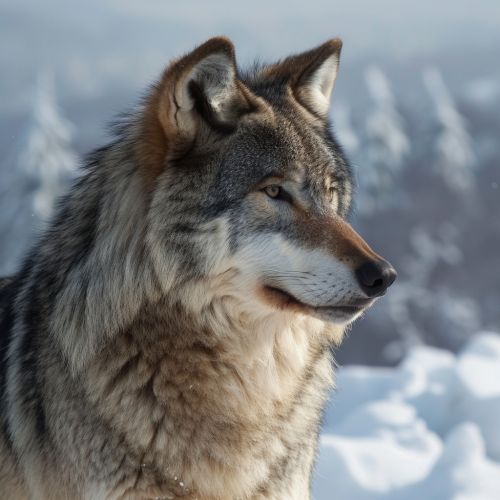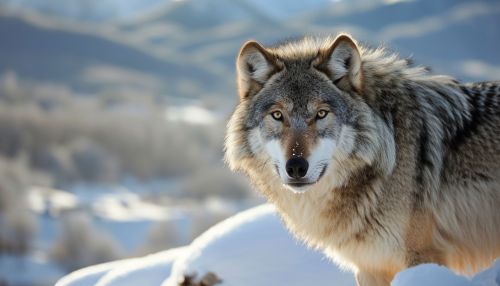Canis lupus hattai
Taxonomy and Naming
The Canis lupus hattai is a subspecies of the gray wolf that is native to the islands of Hokkaido in Japan. The scientific name of this subspecies was derived from the name of Yoshio Hatta, a Japanese zoologist who made significant contributions to the study of the mammalian fauna of Japan.
Description
The Canis lupus hattai is a medium-sized wolf, with males being larger than females. The adult males typically weigh between 30 and 40 kilograms, while females weigh between 25 and 35 kilograms. They have a dense coat of fur that is primarily gray in color, although individuals may have patches of white, black, or brown. The fur is particularly thick during the winter months, which helps these wolves survive in the cold climate of Hokkaido.


Distribution and Habitat
The Canis lupus hattai is endemic to the island of Hokkaido in northern Japan. They inhabit a variety of habitats on the island, including forests, mountains, and coastal areas. These wolves are well-adapted to the cold climate of Hokkaido, and they are capable of surviving in areas with heavy snowfall.
Behavior and Ecology
Like other wolves, the Canis lupus hattai is a social animal that lives in packs. These packs are typically composed of a breeding pair and their offspring, although they may also include other related individuals. The pack is led by an alpha male and female, who are the only members of the pack that breed.
The Canis lupus hattai is a carnivorous animal that primarily preys on large ungulates, such as the sika deer and the Japanese serow. They are also known to eat smaller mammals, birds, and occasionally fish. These wolves are skilled hunters that work together in their packs to bring down their prey.
Conservation Status
The Canis lupus hattai is currently listed as an endangered species by the International Union for Conservation of Nature (IUCN). The main threats to this subspecies are habitat loss due to deforestation and human encroachment, as well as hunting and poaching.
